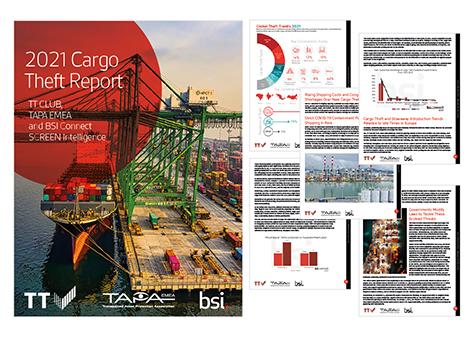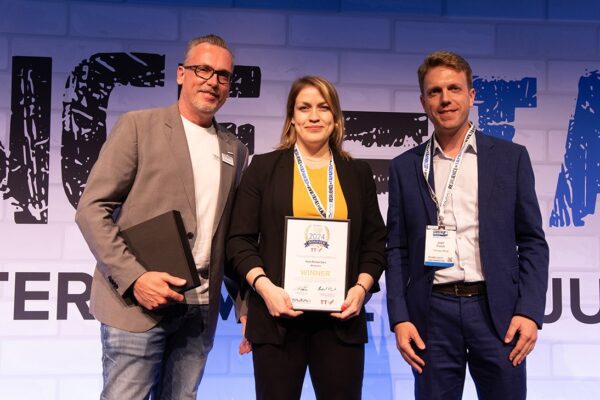
Cargo at rest is a prime target for criminals preying on supply chain congestion at ports and inland facilities
Supply chain congestion is increasing the threat of freight thefts as longer periods of cargo-at-rest as a result of widespread congestion at ports and inland facilities has created more opportunities for cargo criminals, says a new report.
The 2021 Cargo Theft Report was produced by leading international transport and logistics insurer, TT Club, supply chain intelligence provider, BSI Screen, and contains insight on the Europe, Middle East & Africa region from TAPA EMEA. It highlights:
- Globally, cargo thefts from or of vehicles in-transit declined overall as incidents at storage facilities rose to nearly 30%
- In North America, prevalence of port congestion and railhead delays were seen as a crucial factor
- Idle times in European locations also augmented theft while stowaway risks also increased
- Strict Covid-19 protocols at Asian ports, particularly in China, created delays and backlogs, leading to theft opportunities
- Increased influence of insider infiltration into operator organisations, such as haulage companies and warehousing facilities
- Adoption by criminals of new technology – assisted by increased digitalisation of supply chain processes and communication
The annual report is based on recent incident data for the whole of 2021 collated from sources including law enforcement agencies, governments and trade associations.
“Constant vigilance is required in order to combat the growing risk divergence in theft trends,” said Mike Yarwood, Managing Director, Loss Prevention at TT Club. “Criminals are quick to adapt to prevailing conditions and have swiftly responded to the increased opportunities that supply chain congestion presents through the amount of cargo laying idle. In addition, the transport industry’s growing reliance on technology, and a rapidly changing market for sourcing materials and components, have opened up new avenues for criminals to take advantage of companies’ increased vulnerabilities. TT, along with its partners, is committed to tracking and reporting on such developments in criminals’ methods of operation in order to reduce the risk of losses wherever possible.”
The products most frequently involved in global cargo thefts overall last year, the report states, included agricultural produce (12%), food and beverage (14%), construction materials (9%) and electronics (10%). Significantly, many of the materials used to produce the latter two, such as nitrogen, iron ore, lumber, steel and semiconductors, have all experienced sharp price increases since the outbreak of the global pandemic due to shortages, with a consequent increase in the value of the manufactured products.
The report also offers advice on how operators can protect their cargo from the theft risks outlined. BSI’s Practice Director for Security and Resilience, Tony Pelli, has produced a checklist of precautionary action points. “To mitigate risk there are a range of safeguards, including careful verification of trucking companies and other sub-contractors; insisting on the provision of details such as driver’s name, trailer number and appointed pick-up times, and background screening of employees,” he commented. “Vigilance is paramount, and we hope our reporting and advice will help supply chain partners to maintain and increase their diligent efforts to combat crime.”
Thorsten Neumann, President & CEO, of TAPA EMEA, commented: “What we are seeing in EMEA is a heightened level of risk to virtually all types of goods moving in supply chains across our region. This comes from increasingly active and sophisticated organised crime groups which often regard supply chains as an easy and lucrative target. Sadly, too many companies wait to seek solutions until they become a victim of a cargo crime but, by then, they will have suffered a significant financial and reputational loss. The way forward is to recognise the risks which exist and to learn about the industry standards, training and intelligence solutions which are available today and which are already key to the supply chain resilience of leading manufacturers and freight transport and logistic providers. All is not lost, but it is a time for action to manage these risks and prevent rising product losses.”
Mike Yarwood will be one of the experts joining the Insurance Panel Q&A at TAPA EMEA’s upcoming conference in Amsterdam on 7 & 8 June 2022.


















